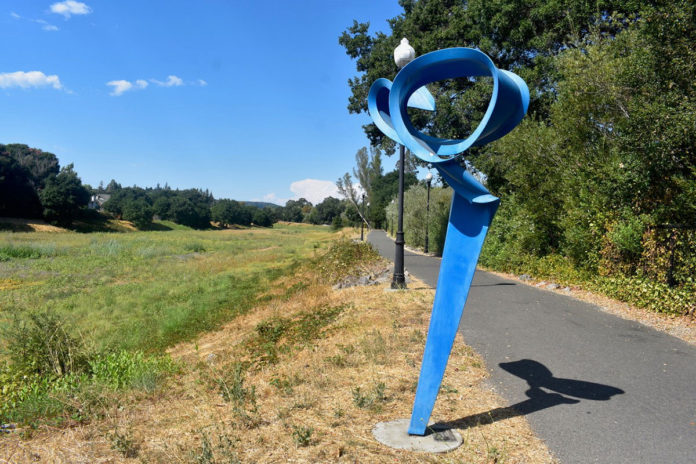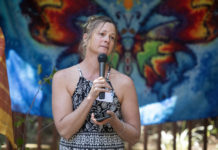

Every year, summer’s arrival brings with it the resolution to take more hikes. Young adventurers may plan extended forays in the backcountry or weeks-long tromps along the Appalachian or Pacific Crest trails, but those challenges aren’t in the cards for most of us. Instead, an easy stroll along a near-level trail with some scenic or historic value is the perfect way to get out and feel good about it.
Enter the rail trail. The concept developed in the 1980s as railroads across the country were decommissioned and a growing population sought new trails to travel. Thus the Rails to Trails Conservancy was formed out of timely necessity. Nearly 2,500 rail trails nationally now span 25,000 miles, as practical a reuse of a transportation corridor as one could conceive.
Much local attention lately has focused on the Great Redwood Trail, a promised 271-mile pathway from Marin County to Humboldt Bay, to be built along the former railroad tracks that linked the Bay Area with Redwood Country.
But the Great Redwood Trail is neither an isolated nor unique concept. Rail trails, the conversion of railroad easements into foot trails, have been developed in different places around the country for years, and Glen Ellen’s Tracy Salcedo has been writing hiking guidebooks for at least as long. Put the two together and discover her latest, Best Rail Trails – Northern California.
It’s subtitled Accessible and Car-free Routes for Walking, Running, and Biking, and if that doesn’t sell the concept nothing will. A total of 37 such trails, plus several bonus tracks, span the state from Eureka to Fresno, and each description includes a list of amenities including cell coverage, directions, distance and even canine compatibility. (Fortunately that almost always means only leashed dogs are permitted.)
The not-so-dirty little secret about rail trails is how absolutely perfect they are for the casual hiker. “First and foremost, their flat or gentle grades make them perfect for all kinds of users of all ages,” Salcedo writes. “They are almost universally accessible and usually wide enough for people to share with companions and others, regardless whether on foot or on wheels, self-propelled or along for the ride.”
What’s not to like?
Here in Healdsburg we have the Foss Creek Pathway, a classic rail-to-trail conversion running from the former Depot on Hudson Street to the Healdsburg Community Center. A part of the Great Redwood Trail concept, as well as a link in the SMART Footpath in development, this guidebook covers it, too.

It’s far from the only one, familiar or unfamiliar. Others include the Joe Rodota and West County trails, the Sonoma City Trail—which, like the Foss Creek Pathway, travels next to an old depot—and the Valley of the Moon Trail, near Salcedo’s own haunts.
Farther afield the Great Shasta Rail Trail and the Bizz Johnson National Recreation Trail near Mount Lassen offer more mountainous terrain and scenery. While an overnight option is possible—the Bizz Johnson is 25 miles one way—it can be traveled on a bike in a day, all downhill from Westwood to Susanville, where a smart traveler can grab the Lassen Rural Bus line for the return trip.
This book should live in the car, so it’s easy to grab and consult as the need arises. It’s a good example of the value of an actual physical guidebook—one can leaf through its pages to find the nearest rail trail on a whim, and be ready to take a hike with little more than a water bottle and a hat. Using an app just doesn’t bring the same spontaneous satisfaction as having a good guidebook handy, and this is a good guidebook to have handy.
“Best Rail Trails – Northern California,” by Tracy Salcedo (Falcon Guides, 2024). $22.95, 267 pages.







